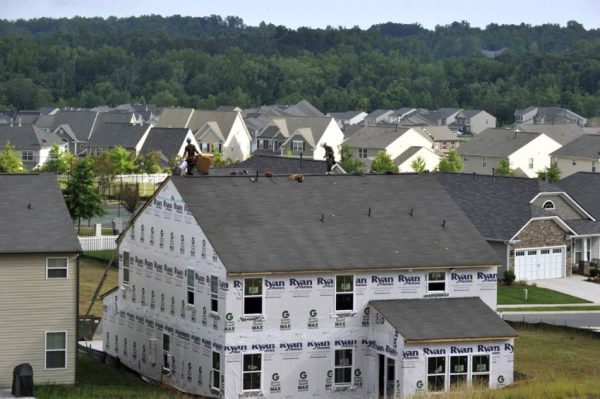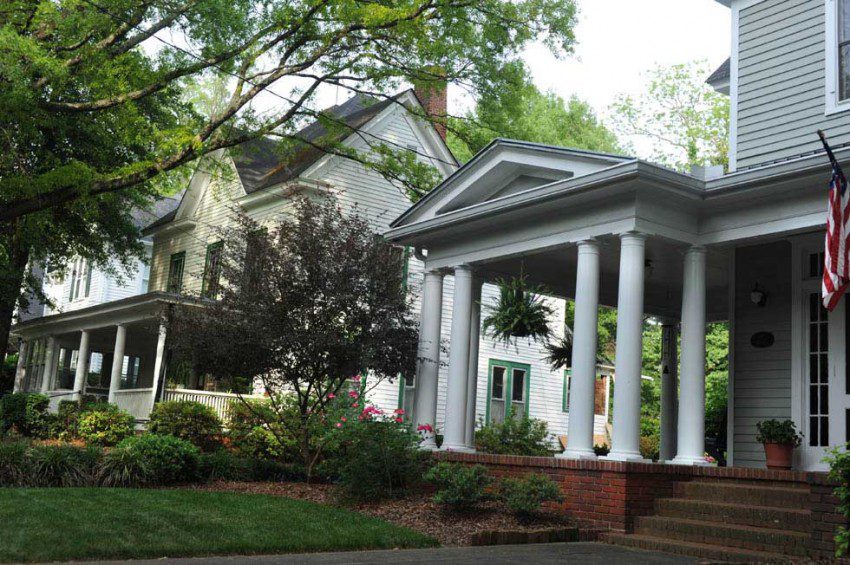Untangling urban growth boundaries

Containment policies, such as Urban Growth Boundaries (UGBs), are becoming more widespread as metro regions try to control sprawl and revitalize central cities. Mecklenburg County’s northeastern neighbor, Cabarrus County, has tried such an approach in hopes of preserving small town atmospheres and farmland.
Disappearing farmland and mounting pressure from developers reached an apex in 2004. “We felt there was a difference in standards between what developers wanted and what the county wanted,” Jonathan Marshall, deputy county manager of operations for Cabarrus County, said in a phone interview. “We wanted a policy that would promote farm- and pastureland and create jobs through agriculture, such as the incubator farm and meat processing facilities we now have.” 
In December 2004, the county enacted a temporary moratorium on new residential subdivision applications while it hammered out new land-use and zoning regulations. The result was a central agreement ultimately passed in August 2008 among Cabarrus County government, and the towns of Concord, Kannapolis, Mount Pleasant and Harrisburg.
Initially, there was resistance to Cabarrus’ nontraditional way of handling growth. “We held a lot of public workshops and meetings along the way. Once the public understood what we were doing, it became very well received,” said Marshall.
The world of containment policies is sharply divided. One side sees them as effective tools to curb sprawl and manage public services efficiently. The other views them as an infringement of property rights that interferes with the real estate market.
No matter your camp, they are here to stay. (This brief video from the Lincoln Institute of Land Policy describes how the growth boundary in Portland, Ore., works.)
Containment policies, often referred to collectively as UGBs, are legal and administrative lines on a map beyond which only rural growth is allowed. UGBs are intended to preserve natural resources by identifying the area needed for growth over a specified length of time, generally 20 years. They are re-evaluated and adjusted as needed, through a legal process. Within the UGB, municipalities generally promote urban and infill development, compact communities and centers that encourage “smart growth” through sensible land use. Codes typically call for parks, recreation areas, pedestrian-oriented developments and an efficient provision of services and facilities. Development outside the UGB is restricted, and land is set aside for agricultural uses, recreation or preservation.
There are three general forms of containment policies: urban growth boundaries (UGBs), urban service boundaries (USBs), and green belts.
The first type – the UGB – seeks to contain growth directly through land use policy by drawing a line around areas where development can or cannot occur, often enveloping many individual jurisdictions. Infill development is strongly emphasized, and areas with multiple jurisdictions need a great deal of regional cooperation, or regional governance. Iredell County’s Mooresville adopted its own UGB in 1998 to stop unrestrained growth and guide it toward future regional rail lines and downtown revitalization areas.
The second type – the USB – contains growth as a byproduct of caps placed on extending infrastructure. This fiscal policy tool focuses on efficiency and the ability to serve new development without building additional water and sewer service lines, roads or other costly facilities. This works to bolster existing neighborhoods and promote infill. Cabarrus County, in agreement with its municipalities (and through an overarching authority), used this approach to define a service area beyond which water and sewer would not be extended. Other services, like police and fire, are handled locally. Its service area is re-evaluated in 10 years.
The third type of containment policy – acquiring or delineating a green belt – sets the highest priority on identifying land for preservation to create an extensive natural buffer around the developed area to control growth directly. Green belt lands can be set aside for open space, agriculture or existing rural residential, often through the government or a nonprofit buying the land or the development rights.
But are growth management policies really needed?
The 2008 U.S. Census Bureau  estimated the American population would grow from a little more than 310 million to nearly 440 million between 2010 and 2050. Of that growth, 80 percent is expected to be in metropolitan areas where greenfield development is twice the rate of actual population growth. Based on existing trends, that means more low-density outward expansion (sprawl), coupled with central-city under-performance and decay.
estimated the American population would grow from a little more than 310 million to nearly 440 million between 2010 and 2050. Of that growth, 80 percent is expected to be in metropolitan areas where greenfield development is twice the rate of actual population growth. Based on existing trends, that means more low-density outward expansion (sprawl), coupled with central-city under-performance and decay.
Those trends began in the post-World War II years, which were marked by a government-subsidized restructuring of America through construction of the interstate highway system, massive building of suburbs and destruction of many city centers through misguided urban renewal projects. Between 1890 and 1920, the total number of housing starts across the U.S. ranged between 250,000 to 400,000 a year. In the 1950s alone, more than 15 million houses were constructed.
Such a radical change in America’s landscape was unprecedented, as the tendrils of sprawl unfurled in hyper-speed across former farmland and open space.
The far-reaching issues associated with that super-growth – like environmental protection, affordable housing and adequate infrastructure development – often cross municipal boundaries. Locally based zoning and land use regulation is usually inadequate to deal with such multijurisdictional issues.
Hawaii was the first state to adopt statewide laws restricting growth, in 1961, to protect land needed for pineapple and sugar cane plantations. By 1999, more than 100 cities and counties had UGBs, and statewide mandates had been enacted for UGBs in Oregon, Tennessee and Washington. Portland’s (adopted in 1973) is the most enduring in the U.S., the most studied and the largest, at about 400 square miles.
Although UGBs are now more common, they are not without controversy.
Critics of growth management claim UGBs restrict growth and supply, driving up housing costs. Studies are inconclusive, but more recently have found it’s market demand, not land constraints, determining housing prices. Additionally, the lack of affordable housing in many major metropolitan areas has created a “nomadic poor,” constantly uprooted in search of reasonable rents. Perhaps partly in response to this criticism, Portland has included affordable housing as a central element to meet Oregon’s statewide growth management goals.
Other studies of multiple cities show that containment policies to cap sprawl are effective tools for central city rev italization. However, central city gains do not necessarily mean suburban losses in areas with UGBs. Instead, containment boundaries act to shift development away from ex-urban and rural areas back inside the UGB. While suburban areas continue to grow in both contained and uncontained areas, central cities that are in contained metropolitan areas see more development than in uncontained metro areas.
italization. However, central city gains do not necessarily mean suburban losses in areas with UGBs. Instead, containment boundaries act to shift development away from ex-urban and rural areas back inside the UGB. While suburban areas continue to grow in both contained and uncontained areas, central cities that are in contained metropolitan areas see more development than in uncontained metro areas.
The effectiveness of UGBs is a point of contention, but it is proven that suburbs and cities are highly interconnected when it comes to job and income rates, rising and falling together. It is therefore in their best interests to work together toward mutually beneficial goals.
This fact resonates in Charlotte-Mecklenburg and its metro region. “Right now Cabarrus County is in the process of working on a master plan for water and sewer that began with land use as its basis,” said Jonathan Marshall. Growth areas are first identified, and then utilities can follow, rather than the other way around.
“We are taking an entire community view. There is a place for more detailed and specific area plans,” he said, “but the entire county has reaped a benefit by more logical growth happening from the inside out.”
Other sources: Cities and Suburbs. New metropolitan realities in the US. By Hanlon, Short and Vicino. (2010). USA and Canada: Routledge.